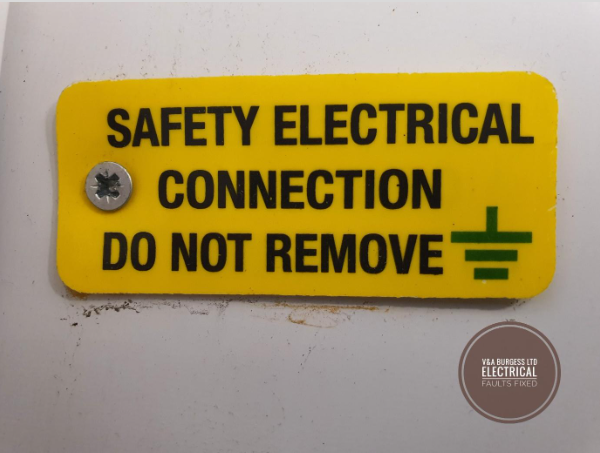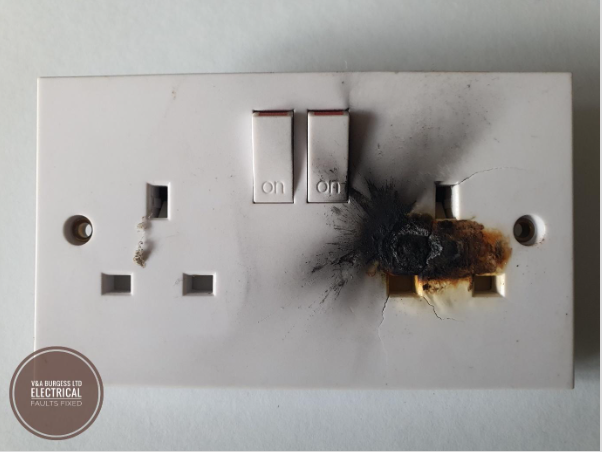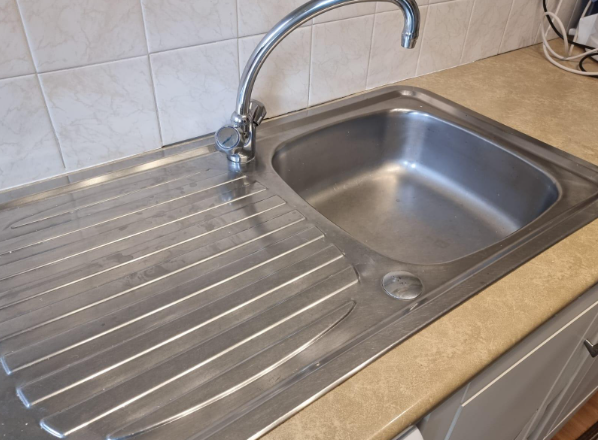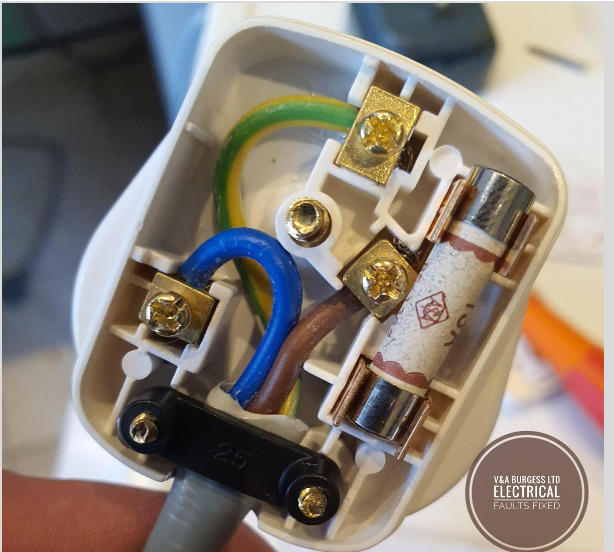Hazards and Electrical Safety in the Workplace - Electrical Faults Fixed
Table of Contents
- Risk Assessment before using electrical equipment
- The Certification of Electrical Systems and Equipment
- Obligations of Employers
- Electrical Duty Holders at Work
- Workforce compliance
- HASAWA 1974
- EAWR 1989
- PUWER 1998
-
10 Common Hazards Involving Electrical Systems
- 1. Damaged equipment
- 2. Overhead Electricity Cables
- 3. Using electrical equipment near water or with wet hands
- 4. Frayed, loose or exposed Wiring and Cables
- 5. Overloading Plug Sockets
- 6. Incorrectly Sized Fuses
- 7. Faulty Earthing
- 8. Odours and smoke from equipment
- 9. Improper use of electrical equipment
- 10. Power tools
- Summary
Electrical accidents at work can largely be prevented but without safety systems in place, electrical shock, burns and electrical injuries can leave persons with ongoing injuries, cause sickness and absences, and mean large fines or possible imprisonment for employers. Implementing electrical safety protocols, safe work practices and electrical safety training are vital to ensure a safe work environment for everyone.
Back to top1) Risk Assessment before using electrical equipment
Before using any portable electrical equipment or fixed electrical equipment, conducting a risk assessment is essential to ensure safety in the workplace. This process involves identifying general and specific potential electrical hazards, such as faulty wiring, damaged insulation, or improper earthing, that could lead to electric shocks, electrical fire, or equipment failure.
The risk assessment should evaluate the environment, the condition of the equipment ensuring that qualified persons are the only persons to operate it. Control measures, such as a residual current device (RCD), visual inspections of power cords and casings, using protective equipment or isolating power sources, should be implemented as necessary. Regular reviews of the assessment are important to account for any changes in equipment or working conditions, ensuring ongoing safety compliance.
Back to top2) The Certification of Electrical Systems and Equipment
In the UK, electrical safety certificates for an electrical installation, electrical appliances and portable equipment are a vital part of ensuring workplace safety. Electrical installations must comply with the British Standards BS 7671, also known as the IET Wiring Regulations. Certification verifies that electrical systems are designed, installed, and maintained to meet these safety standards, reducing electrical risks, such as electrical shocks, fires, or equipment malfunctions.

Periodic inspections and testing are required, particularly for high-risk environments such as construction sites, and must be carried out by qualified persons. Employers are responsible for keeping records of these certificates, which act as proof that their electrical systems are safe. Compliance with the law helps to prevent potential hazards and ensures that systems operate efficiently. Moreover, certification demonstrates that the employer takes their legal obligations seriously, promoting a safer working environment for all employees. Failure to certify equipment can result in legal consequences for business owners and increased liability for workplace accidents.
Back to top3) Obligations of Employers
Employers in the UK have a legal duty to ensure the safety of their employees when it comes to electrical systems and equipment in the workplace. Under various health and safety regulations, including the Health and Safety at Work Act 1974 (HASAWA), employers must assess risks, implement preventative measures, and maintain electrical systems to reduce the potential for accidents. This includes providing proper training for employees, ensuring that equipment is properly certified, and arranging for regular inspections and maintenance.
Employers are also required to provide personal protective equipment (PPE) where necessary and ensure that employees are aware of safe working practices. Non-compliance can result in fines, legal action, and even imprisonment in severe cases. It is also important that employers keep accurate records of maintenance, inspections, and any incidents to demonstrate that they are meeting their legal obligations in maintaining a safe working environment for all.
Back to top4) Electrical Duty Holders at Work
Electrical duty holders are individuals or organisations responsible for ensuring the safety of electrical systems within a workplace. In the UK, their role is defined by laws such as the Electricity at Work Regulations 1989 (EAWR). Duty holders may include employers, facilities managers, or supervisors who have control over electrical installations. They are responsible for ensuring that electrical systems are safe to use, properly maintained, and regularly inspected by qualified personnel.
Duty holders must ensure that all electrical work is carried out by competent persons and that equipment complies with relevant safety standards, including certification and testing requirements. Furthermore, they must take reasonable steps to eliminate risks such as electrical shocks, fires, or explosions. If electrical duty holders fail in their responsibilities, they may be held legally accountable, which could lead to penalties, including fines or prosecution, should a serious accident occur in the workplace.
Maybe take some training to discover responsibilities.
5) Workforce compliance
Workforce compliance is necessary for maintaining electrical safety in the workplace. Employees must follow good practice guidelines, adhere to electrical safety tips, use personal protective equipment (PPE), and follow established protocols when working with or near electrical systems. Employers are responsible for providing training and ensuring that employees understand the risks involved in handling electrical equipment. Workers should report any faults or hazards they encounter to prevent accidents.

In the UK, compliance is governed by legislation such as the Electricity at Work Regulations 1989 (EAWR), which places responsibilities on both employers and employees to ensure electrical safety. Employees must only use equipment they are trained and authorised to operate, and they should never carry out electrical work unless qualified. Failing to comply with safety standards can not only result in injury but can also lead to legal consequences for both employees and employers. Promoting a safety-conscious culture is key to reducing workplace risks.
Back to top6) HASAWA 1974
The Health and Safety at Work Act 1974 (HASAWA) is the primary piece of legislation governing workplace health and safety in the UK. It places a duty on employers to ensure, as far as is reasonably practicable, the health, safety, and welfare of their employees. For electrical safety, HASAWA requires employers to assess risks associated with electrical systems and take appropriate measures to mitigate these risks.
Employers must provide safe systems of work, suitable training, and ensure that electrical equipment is regularly maintained and inspected. The Act also applies to employees, who have a duty to take reasonable care for their own health and safety, as well as that of others. HASAWA provides a framework for various regulations, including the Electricity at Work Regulations 1989, which further detail specific requirements for electrical safety. Non-compliance can result in enforcement action, including fines and prosecutions, aimed at preventing workplace accidents.
Back to top7) EAWR 1989
The Electricity at Work Regulations 1989 (EAWR) is a critical piece of UK legislation that sets out requirements to ensure electrical safety in the workplace. It applies to all electrical systems, electrical panels and equipment used at work, placing a legal duty on employers, employees, and duty holders to ensure that electrical systems are constructed, maintained, and operated safely.
Under EAWR, all electrical equipment must be safe for use and subject to frequent visual checks, electrical checks, testing, and certification. The regulations also stipulate that only competent and qualified individuals should carry out electrical work to prevent hazards such as electrical shocks, fires, or explosions. EAWR is closely linked to other health and safety laws, such as the Health and Safety at Work Act 1974, and non-compliance can lead to severe legal consequences. The regulations aim to minimise the risks associated with electricity in the workplace, safeguarding employees and reducing potential liabilities for employers.
Back to top8) PUWER 1998
The Provision and Use of Work Equipment Regulations 1998 (PUWER) govern the safe use of work equipment, including electrical devices, in the UK. The regulations require employers to ensure that all work equipment, whether new or old, is suitable for the task, maintained in safe working order, and used only by individuals who have received the necessary training and instructions.
PUWER mandates regular inspections of equipment to identify any potential safety hazards and ensure compliance with relevant standards. For electrical equipment, this may include checks for faults, wear, and tear, and ensuring that safety features like guards and insulation are functioning correctly. PUWER is essential for preventing workplace accidents, particularly when using hazardous equipment, and works alongside other regulations such as the Electricity at Work Regulations 1989.
Failure to comply with PUWER can result in enforcement action, including fines or legal action, especially if unsafe equipment causes an injury or accident.
Back to top9) 10 Common Hazards Involving Electrical Systems
9.1) 1. Damaged equipment
Using damaged electrical equipment, can be very dangerous. Where equipment has obvious signs of damage, excessive wear or shows signs of incorrect operation during use, it should not be used until it has been checked by an appliance engineer, electrician, or other competent and qualified person.
9.2) 2. Overhead Electricity Cables
Due to the extremely high voltage that overhead lines can carry, it is recommended to stay well clear and avoid any works in the area of overhead lines. The voltage carried by such lines can reach up to 400'000 volts and as such, presents a real risk of electric shock, fire and burns to anyone that comes too close to the lines. Special care should be taken when using ladders around such equipment. For further guidance, the health and safety executive have a useful document.
9.3) 3. Using electrical equipment near water or with wet hands
Water can increase the chance of electric shocks and electrocution as our body resistance is lowered when wet. As such, electrical equipment should not be used near a source of water or operated with wet hands unless the equipment has been designed to operate under such conditions. If the equipment does get wet, a qualified electrician should inspect it before it is used again.

9.4) 4. Frayed, loose or exposed Wiring and Cables
Electrical cords and cables on equipment contain insulated live wires. If the cable becomes frayed or cracked, the thin insulation can appear or live wires can be exposed and lead to electrical fires or electric shock. Damaged wiring or cables should be noted and reported to superiors immediately and use of the equipment ceased until the equipment has been repaired. Never tape over damaged wiring and continue to use.
9.5) 5. Overloading Plug Sockets
Many offices are full of computers and other equipment that all need plugging in, often with lots of extension leads and adapters that can result in a spaghetti of cables and plugs. Ideally, an individual power socket should provide electricity to a single item, such as a computer monitor or printer.
If you do need to power several appliances from a single socket, use a fused, multi-way bar extension lead with surge protection rather than relying on a basic block adapter when plugging in additional equipment.
Do not overload the extension lead by plugging in several appliances that exceed the maximum electrical current level stated for the extension lead. Never plug an extension lead into another extension lead and replace the extension lead when it is required.
9.6) 6. Incorrectly Sized Fuses
Fuses protect the cable and appliance and guard against large electrical fault currents. If you are fitting or replacing a fuse, you must use the right fuse for the appliance so that the cable does not overheat or catch fire. Check the manual or the label on the appliance to find out the wattage and the correct fuse required for the plug top.
Where a plug top has become damaged or requires rewiring, a competent person must carry out the task. An in-depth article explains how a plug top can be changed.

9.7) 7. Faulty Earthing
All electrical equipment and devices must be earthed or grounded. If not, you are at risk of electrocution. Make sure that electrical equipment is periodically checked and certified by a qualified, competent person. Earthing is vital in the event of an electrical fault as it enables the circuit breakers or trip switches at the mains to turn off. Without earthing, electrics remain live in the event of a fault!
9.8) 8. Odours and smoke from equipment
A smell of hot plastic, fishy burning, sparks or smoke coming from plugs, appliances or sockets are signs of a potential electrical fire (so keep an eye out for these danger signs. Get help from a qualified person and turn off the electrical supply to any equipment that appears to develop an electrical fault .
9.9) 9. Improper use of electrical equipment
Failing to use electrical equipment properly in accordance with the requirements of the manufacturer’s instructions can lead to serious injury. Electrical equipment should be purchased and used for the purpose which it was designed. Modifying equipment to perform different tasks or overloading equipment to make it perform its task more quickly is highly dangerous and could lead to electrical fires, serious injury and investigations from the HSE.
9.10) 10. Power tools
Power tools and their use can come under PUWER regulations and their use should be in accordance with safe working practices and the manufacturer’s instructions. When using mains powered tools, they should only be connected to safe, working, and undamaged plug sockets. Where plug sockets are cracked, damaged or burnt, tools and equipment should not be connected and an electrician should be contacted to check and replace such items.
Back to top10) Summary
In order to maintain electrical safety and eliminate electrical hazards in the workplace, safe working practices should be followed. Employee training and electrical awareness are both vital to ensure that only safe operation of electrical equipment is undertaken.
Without care and planning, there can be grave consequences for the public, the employees and the business itself.
Read more articles
- Log in to post comments


